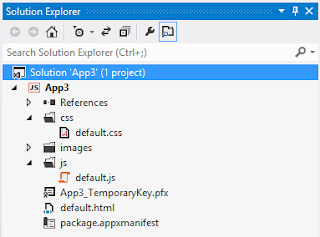

See this full sample code in context (or run it!) in the Xamarin Community Toolkit sample app. When running the above code, it will show up like in the screenshot below. So, in practice, the TabViewItems will act as your actual tabs. But more importantly inside of these items you will specify the content. Those items even have more properties to customize. If we look a little bit closer, we see that we have a TabView at the root and inside of the you’ll need to use TabViewItem. Placement top or bottom, background color, specify a height, enable an indicator and give it a color.

You can already see so many options that are not available on the default tab bar. Basic Usageīasic usage of the TabView looks like below.
#Winjs tabview install#
The TabView is available in the Xamarin Community Toolkit, today! But before you go off and install it right away, let me show you a couple of the cool things it can do. We’re able to bind items to tabs, scroll through them (both the pages as the actual tabs!), have animations, badges, and most of all… We can implement that big, floating, rounded action button. To be able to provide you with all the above, and more, there is now… TabView! TabView: All You’ve Ever Wanted from a Tab Barīy creating a tab bar from all Xamarin.Forms elements a whole new world opens. There was a big ask for having a bit action button floating on that tab bar or being able to scroll through tabs, have animations, and more! Over the years we’ve surfaced more APIs that allow you to style the tab bar more, but the native platforms kept limiting us. This works great and maps to the native equivalents on all platforms supported, but that is just the thing: it uses the native look and feel. The way to implement a tab bar in Xamarin.Forms is by using a TabbedPage. In this blogpost we’ll learn what it’s all about. With the TabView you have full control over the look-and-feel of the tab bar. To overcome this, we’ve added the TabView to the Xamarin Community Toolkit. To limit your custom styles to a specific control, assign the control an ID or custom class name and use that as part of your style selector.One of the hardest parts of apps to customize is the tab bar. Note There are several CSS classes that are shared between multiple WinJS controls. Styles the SplitViewPaneToggle button layout.
#Winjs tabview windows#
To customize the SplitViewPaneToggle, you can define your own styles for these CSS classes (defined by the Windows Library for JavaScript style sheets): CSS class Styling the SplitViewPaneToggle CSS classes Instantiating on any other element will throw an exception. SplitViewPaneToggle is required to be instantiated on a button element.

Handling the SplitView opening and closing.Handling the SplitViewPaneToggle’s aria-expanded attribute being mutated (e.g.



 0 kommentar(er)
0 kommentar(er)
